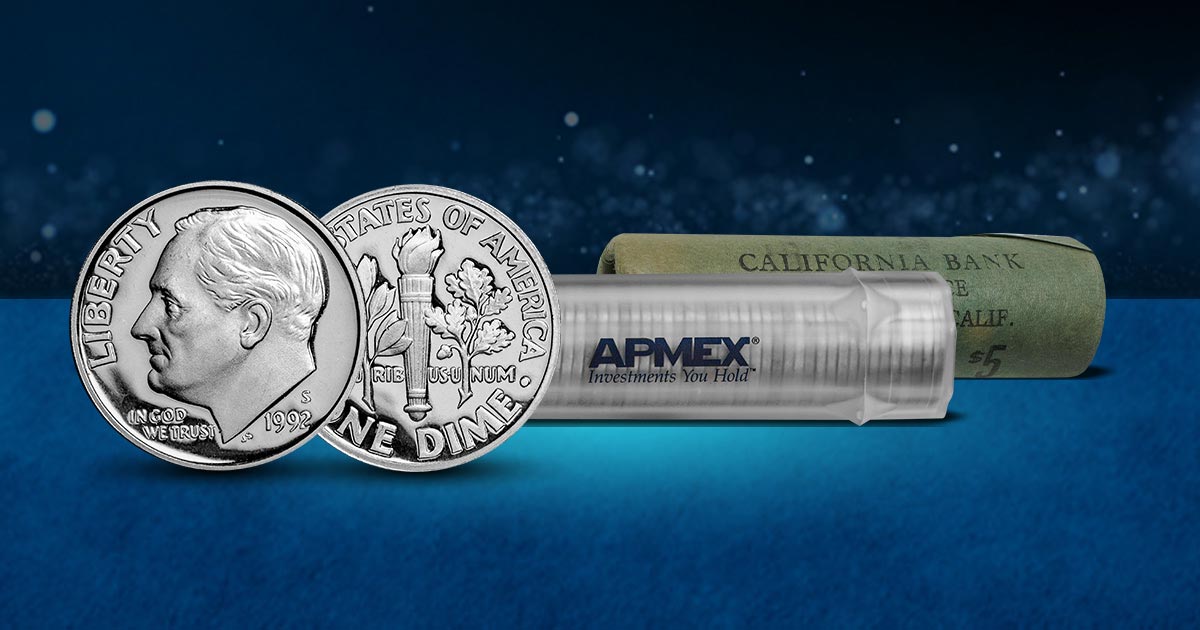
Because of the differences in diameter and thickness, rolls do not have the same number of coins from one denomination to the next.
The number of coins in a roll and color of the roll depends on the denomination of the coin that is used. See the table below for a list of U.S. Mint coins per roll and their face value, listed by denomination.
| Denomination | Number per Roll | Face Value | Color |
| Cent | 50 | $0.50 | Red |
| Nickel | 40 | $2 | Blue |
| Dime | 50 | $5 | Green |
| Quarter | 40 | $10 | Orange |
| Half Dollar | 20 | $10 | Yellow |
Why do Banks Use Coin Rolls?
Early coins were not all uniform, and that led to issues like coin clipping. As coinage systems improved standardization of weight, size, and shape, so did the need to organize the coins.
Coin rolls are essential for keeping coins organized. They simplify inventory and distribution, which makes dispensing them in large quantities easy and fast.
After coins are minted, they are wrapped in paper rolls. The paper rolls are organized by color and distributed to Federal Reserve Bank locations around the United States. From the Federal Reserve banks, the coins make their way into your pocket change through banks and cash registers.
What is the Most Valuable Coin Roll?
While there is not a single roll of coins that is more valuable than all others, there are valuable coin rolls. Excluding pennies and nickels, rolls of coins issued before 1965 are composed of 90% silver and are worth more than their face value.
For instance, the silver content of 90% silver quarters is worth about $5 in 2023, and a roll of those would be worth about $200.
Collecting Coin Rolls
Rolls of coins are popular with collectors for a number of reasons. They provide collectors with the ability to purchase 20-50 coins of the same denomination.
While some collectors may choose to leave their coin rolls sealed, others may enjoy the thrill of sifting through raw, uncirculated coins.
Collectors have a unique chance to find rare coins, error coins, and other valuable or unique issues when they open a roll of coins. If a roll of coins contains the same year, denomination, and mint marks, some collectors will leave the roll intact and hope for an increase in value in the coming years.
Mixed rolls of coins that have been packaged without homogeneous mint marks, dates, or metal content present more opportunities to find unique and rare coins.
While the number of coins in a roll can vary from denomination to denomination of coin, the thrill of the hunt and the potential for value has no limit.





